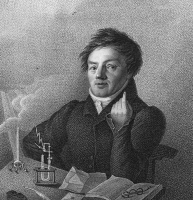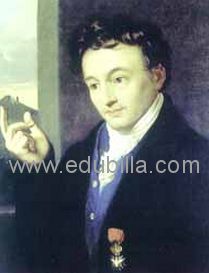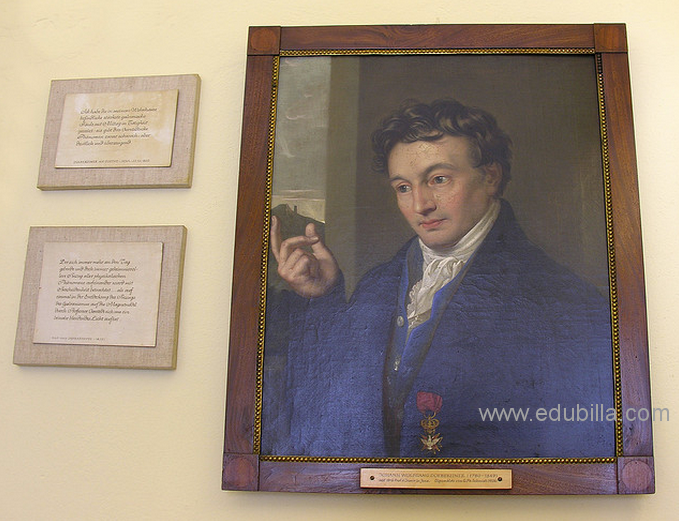










Johann Wolfgang Döbereiner was a German chemist who is best known for work that foreshadowed the periodic law for the chemical elements.
Early Life
As a coachman's son, Döbereiner had little opportunity for formal schooling. So he was apprenticed to an apothecary, reading widely, and attending science lectures. He eventually became a professor at the University of Jena in 1810; he also studied chemistry at Strasbourg. In work beginning in 1829,Döbereiner discovered trends in certain properties of selected groups of elements. For example, the average atomic mass of lithium and potassium was close to the atomic mass of sodium. A similar pattern was found with calcium, strontium, and barium, with sulfur, selenium, and tellurium, and also with chlorine, bromine, and iodine. Moreover, the densities for some of these triads followed a similar pattern. These sets of elements became known as "Dobereiner's Triads".
Döbereiner also is known for his discovery of furfural,for his work on the use of platinum as a catalyst, and for a lighter, known as Döbereiner's lamp.
The German writer Goethe was a friend of Döbereiner, attended his lectures weekly, and used his theories of chemical affinities as a basis for his famous 1809 novella Elective Affinities.

